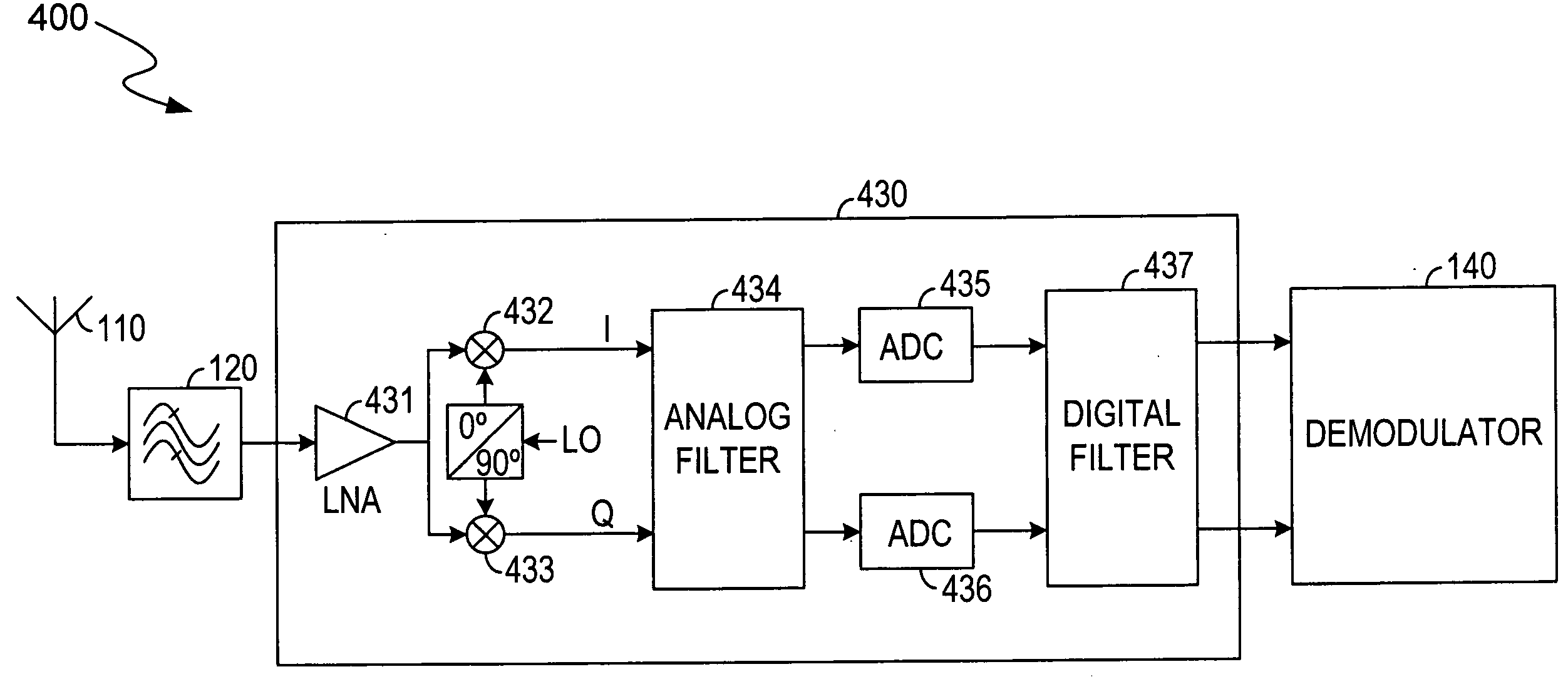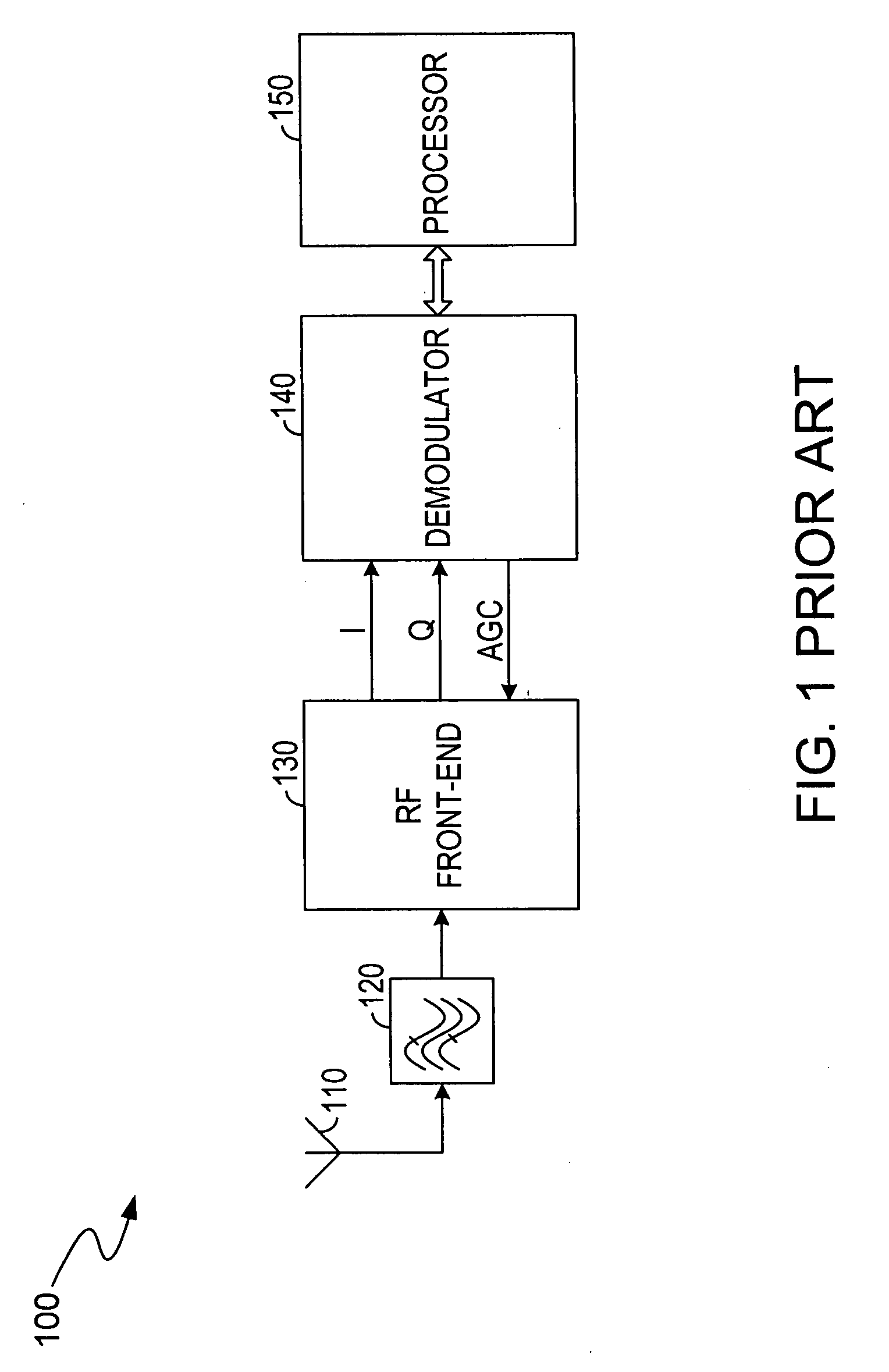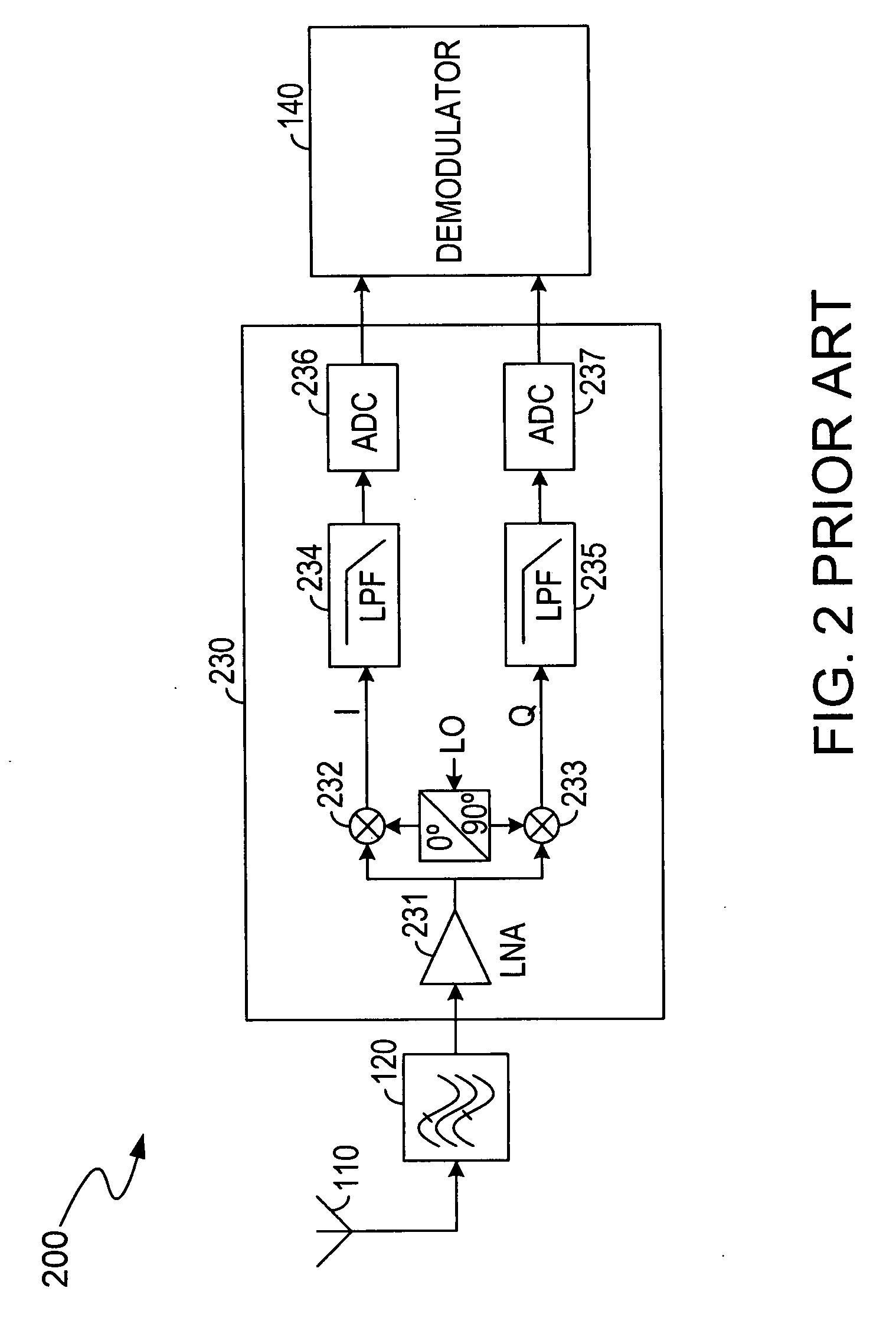Adaptive wireless receiver
a wireless receiver and receiver technology, applied in the direction of transmission, electrical equipment, etc., can solve the problems of limiting the performance of the receiver system, affecting the performance of increasing the complexity and cost of the integrated circuit where the zif wireless receiver b>200/b> is embedded,
- Summary
- Abstract
- Description
- Claims
- Application Information
AI Technical Summary
Benefits of technology
Problems solved by technology
Method used
Image
Examples
Embodiment Construction
[0020]FIG. 4 illustrates a simplified block diagram of an adaptive wireless receiver 400 according to the present invention. Because the adaptive wireless receiver 400 is similar to the ZIF (zero intermediate frequency) wireless receiver 200 and the LIF (low intermediate frequency) wireless receiver 300, the similar components thereof are indicated by similar symbols for clarity. The adaptive wireless receiver 400 described in details below can operate in both ZIF mode and LIF mode. The adaptive wireless receiver 400 is configured to support multiple standards and different frequency bands. The adaptive wireless receiver 400 includes the antenna 110, the bandpass filter (BPF) 120, a RF front-end unit 430 and the modulator 140. The RF front-end unit 430 includes a LNA (low noise amplifier) 431, down-conversion mixers 432 and 433, an analog filter 434, ADCs (analog-to-digital converters) 435 and 436, and a digital filter 437.
[0021]The antenna 110 is used to receive the RF signal from ...
PUM
 Login to View More
Login to View More Abstract
Description
Claims
Application Information
 Login to View More
Login to View More - R&D
- Intellectual Property
- Life Sciences
- Materials
- Tech Scout
- Unparalleled Data Quality
- Higher Quality Content
- 60% Fewer Hallucinations
Browse by: Latest US Patents, China's latest patents, Technical Efficacy Thesaurus, Application Domain, Technology Topic, Popular Technical Reports.
© 2025 PatSnap. All rights reserved.Legal|Privacy policy|Modern Slavery Act Transparency Statement|Sitemap|About US| Contact US: help@patsnap.com



